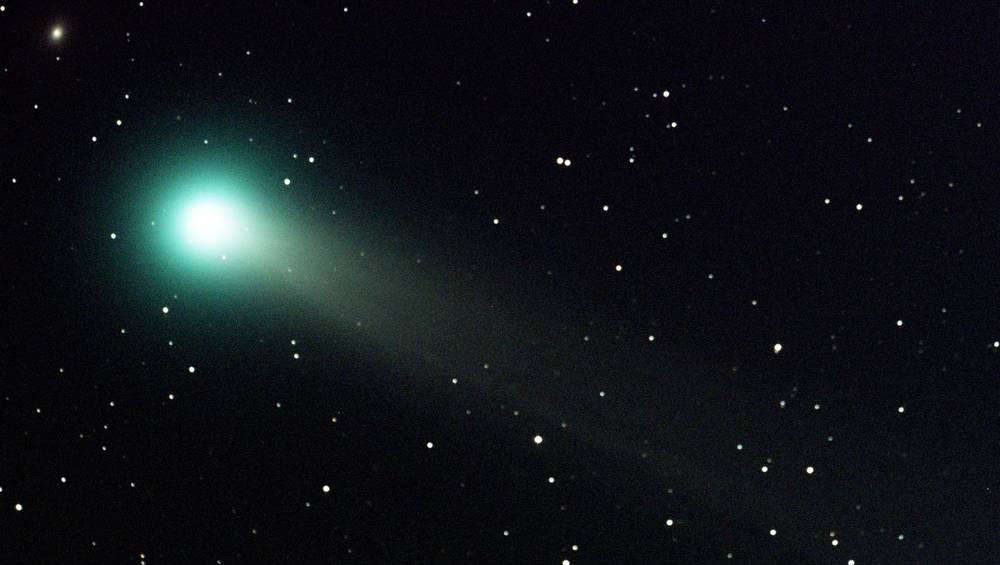Create a free profile to get unlimited access to exclusive videos, sweepstakes, and more!
Comets from the edge of the solar system could have brought life-giving carbon to Earth billions of years ago

When the solar system was young and hot, with protoplanets being smashed by collisions and erupting in volcanoes, imagine an ice rocket from the edge of space shooting towards a teenage Earth.
That ice rocket, and those that came after it, were probably part of the reason our planet evolved into what it is now. Earth might have not been able to trap enough carbon on its own as it was forming. Now scientists are thinking that the frozen projectiles otherwise known as comets could have brought much of it over from the outer reaches of the solar system. Something had to have given habitability an assist. There is no Earth as we know it without carbon because there is no life as we know it without carbon.
Comet Catalina and others like it may reveal some of the secrets from the dawn of the solar system. Catalina has a long orbit that allows it to traverse space unaltered. NASA’s SOFIA (Stratospheric Observatory for Infrared Astronomy) observations have shown that Catalina is something of a dirty snowball full of carbon. This suggests it was born in the carbon-rich edge of the solar system, like the same hypothetical comets which are thought to have flown it to Earth. Astrophysicist Charles “Chick” Woodward believes that carbon from Catalina and comets like it could be part of the mystery of how life spawned on Earth.
“The outer regions of the solar system likely have so much carbon because it was inherited from the interstellar medium, where carbonaceous materials are created in the outflows, or cool winds, of dying stars and recycled into new molecular clouds which are regions of subsequent star and planet formation—like our solar system,” Woodward, who led a study recently published in The Planetary Science Journal, told SYFY WIRE.
You are a carbon-based life-form. Every organism on this planet, from fungus to the massive blue whale, has its genetic code written in carbon. The ability of carbon atoms to form many simultaneous bonds with other elements made it easy for them to bond with nitrogen, oxygen and hydrogen. This is how they create the bases of the DNA and RNA that download genes and decide which ones show up. Carbon is also essential for living things to stay alive. Plants inhale carbon dioxide and exhale the oxygen we, and almost everything else that qualifies as a creature, breathe. Comets with a carbon payload made some of this possible. So in a way, at least part of us came from space.
The reason Catalina can potentially tell us so much about how at least one component of life got to Earth is because its long orbit allows it to pass through the darkness without crashing into anything that could contaminate it. Just about everything should be preserved on this relic of the distant past that formed in a place almost as distant. The inner solar system was a chaotic place back then. It was too hot for volatiles (substances that evaporate easily) such as carbon and nitrogen, which are vital to our genetic makeup, to condense from gases into solid form. Terrestrial planets were already at a disadvantage there. Then there was Jupiter, the gaseous behemoth that pushed everything around.
“Jupiter's motion inwards and outwards within the solar disk, often called migration, creates gravitational gaps that small particles and other bodies cannot immediately cross, until the planet moves again in the disk, allowing leakage to occur,” Woodward said. “Thus if the gravitational resonances change, materials can drift inward.”
If Earth had not been able to obtain carbon from another source, life here may have never existed. Future missions to comets will be able to beam back data that can be compared to Catalina and continue to back the idea that they were responsible for giving our planet a carbon boost. The upcoming James Webb Space Telescope could glimpse a few comets. What Woodward wants to find out next is what other kinds of organics, and how much, comets carried with them.
“We may soon be able to identify organic species like ammonia salts (which contain nitrogen), or complex hydrocarbon chain materials (aromatic or aliphatic species). Such tiny pieces of chemistry can be assembled under the right circumstances to produce biologically important precursors,” he said. “How chemistry becomes "life" is a question that is still being explored.”
What force actually breathed life into carbon and other organics remains unknown, but without comets, Earth’s first microbes may have never come into being.















